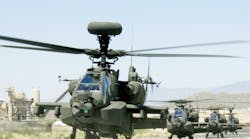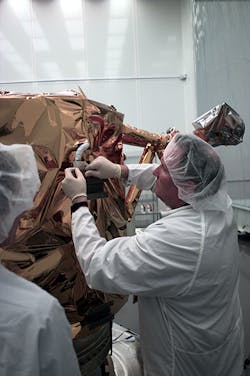It all boils down to two paths.
To boost a region’s manufacturing footprint planners can decide what businesses they wish to attract to the region, or they can analyze current trends and create a strategy to sustain it.
Gilbert, Arizona, part of the Phoenix metro, area chose the latter.
“We took a close look at the source of investments,” explains Dan Henderson, CEO, Gilbert Arizona Office of Economic Development. “Once we understood why capital was flowing into our region, we set our strategies and lined up the necessary tactics. We created a network of companies and government organizations to implement that strategy.”
One trend Gilbert noticed was that a lot of money was coming from Canada. The first reason for the influx was the low cost of real estate due to the economic downturn. Canada weathered the recession relatively well and low land prices in the Phoenix metro area were attractive. From an operating standpoint, prices of both labor and raw materials were higher in Canada. Again this was due to a strong economy. Concurrent with those reasons Canadian companies were making a concerted effort to expand to the U.S. And in Arizona the industries of interest were high-tech, engineering and information technology.
Understanding these factors the city began working on an international business development strategy. “As Arizona’s second largest trade partner and supplier of 130,000 jobs, Canada’s importance to Arizona and Gilbert’s economy cannot be overstated,” said Gilbert Mayor John Lewis. “Gilbert is establishing relationships that will increase foreign direct investment and enhance policies that promote bi-lateral trade.”
The city’s strategy was so successful that they were the first Arizona municipality asked to join the Canada Arizona Business Council. The Council, a group of 100 private individuals, mostly CEOs had spent a number of years priming the partnership. “Our networking capability assures “one degree of separation” from the decision makers in any field,” explains Glenn Williamson, CEO, Canada Arizona Business Council. “Our goal is to increase the bi-lateral trade between Arizona and Canada from $2.5 billion per year to $5 billion.”
One of the ways to reach this goal is to seek out Canadian companies and gauge their interest in opening up locations in the U.S. Silent Aire, an Edmonton, Canada-based manufacturer of HVAC equipment for industrial, healthcare and more recently data centers, was very interested.
The company’s focus on data centers dovetailed nicely with the recent announcement that Apple chose Mesa, Arizona, part of the Phoenix metro area, as the location for a new global data center.
“This location offers us a number of advantages,” explained Brett Manning, vice president of operations, Silent Aire. “It keeps us close to our customers in the Pacific Northwest, as well proximity to Silicon Valley.” The company opened up its factory in August 2013.
Manning said the business climate was especially suited to become the company’s first manufacturing facility outside of Canada. “The various organizations took a measured and surgical approach to helping us navigate the new location. Responses by all parties involved were breathtakingly easy. They were always willing to address our issues and connect us to whatever we needed.”
Part of the company’s decision to move here was that it has always considered itself to be a North American company and needed to be closer to U.S. customers. Not only are they now closer to customers the company has added new customers in Phoenix. “It’s a strong data center market with lot of activity in the area in general,” says Manning.
One reason for the data center activity can tied directly to a strategic decision by the area to offer incentives to the industry. There is a sales tax exemption for data center equipment and construction for owners, operators, and colocation tenants of computer data centers. To qualify the facility must be located in Maricopa County and invest $50 million within 5 years.
Areospace Cluster
Silent Aire’s investment was a major win for the investment strategy begun by the Canada Arizona Business Council over ten years ago when Williamson saw Canada’s interest in the well-established aerospace market in the Phoenix.
“There are only a handful of locations around the world where planes, helicopters and drones are built tip to tail and Arizona and Quebec are two of them,” Williamson said.
Phoenix’s aerospace industry dates back to WWII. Presently is it the eighth largest aerospace market in the U.S with total exports reaching $2.87 billion in 2012. The U.S. is Canada’s largest supplier of aircraft parts and components. And more than 1,200 Arizona-based companies make this state America's third-largest supply chain contributor for aerospace & defense according to the Arizona Commerce Authority.
Industry giants such as Raytheon, Boeing, General Dynamics, Northrup Grumman, United Technologies and Honeywell, to name a few, have made Arizona a major global center for the aerospace and defense industry, and there’s about $2 billion in aerospace-related trade between Arizona and Canada.
The trade between the two is best exemplified by the flow of the supply chain course. One example is Honeyweel. The Phoenix location of Honeywell provides engines for Bombardier’s, CSeries jets ( based in Canada), which are sold to Arizona and operated under Mesa Airlines. The planes are then leased to US Airways.
This is true for General Dynamics as well which has multiple facilities in Canada, with the largest being located in Calgary, and that Canadian link goes back to General Dynamics C4 Systems in Scottsdale.
Two large players in the industry, Lockheed Martin and Orbital Sciences, are located in Gilbert. Lockheed established in Gilbert its lead business unit for research, development and production of world-class electro-optics and smart munitions systems. It is also the only facility in the Lockheed portfolio that provides field support for lasers. Orbital Sciences develops and manufactures small- and medium-class space systems for commercial, military and civil government customers from its Gilbert, Arizona manufacturing facility.
In additon more than 25 companies, including Cessna, Embraer and Hawker Beechcraft, are located only half a mile from Gilbert’s border in the Phoenix-Mesa Gateway Airport’s industrial airpark, a submarket that is surrounded by a foreign trade zone.
Economic developers predict that the Phoenix-Mesa Gateway Airport and surrounding areas will boast over 100,000 new jobs by 2035, making it one of the largest employment centers in the state of Arizona.
And how will this area create this many jobs? The area will build on its workforce strength to continue to attract more talent. Currently around 40% of its residents hold a bachelor’s degree or higher. Arizona ranks fifth among U.S. providers of aerospace employment, with 70% of the area’s science and engineering workforce living within a 45-minute commute to the Gilbert community.
Adjacent to Phoenix Mesa Gateway is a 1,000-acre education, training and research campus with Arizona State University Polytechnic, Chandler-Gilbert Community College’s Aviation Division, U.S. Air Force Research Laboratory and U.S. Army Reserve Center.
Both Arizona State University Polytechnic, and Chandler-Gilbert Community College’s Williams Campus partner with Embry-Riddle Aeronautical University and the University of North Dakota’s top-flight training school, preparing the needed workforce in engineering, aviation, information technology and automated manufacturing systems.
The Arizona State University College of Technology and Innovation offers the industry access to expertise and facilities specifically focused on improvements and advancements, such as flight simulators, the Otteson Air Traffic Control Simulation Laboratory, the Del E. Webb Foundation High Altitude Chamber, Cognitive Engineering Research on Team Tasks (CERTT) Laboratory and the Aerospace Defense Research Collaboratory.
With all of these assets the region is very optimistic. “Our region is well situated to continue to growth of this cluster and to strengthening our aerospace, and other hi-tech industries tie to Canada,” says Henderson.






